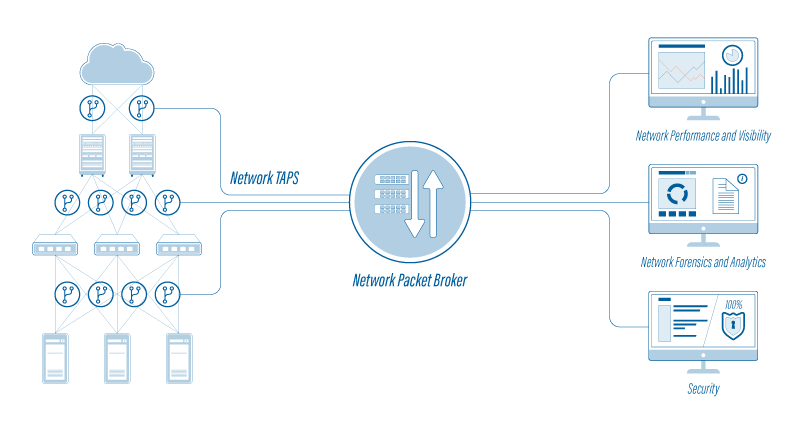SPAN ports were the preferred approach to network visibility for years. However, when the limitations of using SPAN became clear, the adoption of network TAPs started to increase. As we all know, network TAPs are more reliable than SPAN ports, and provide complete visibility into the network. But SPAN ports and network TAPs are just one link in the network visibility chain.
As enterprises have grown more dependent on networks for success, network architectures are being challenged by the evolution of digital business. More and more people and devices find their way to the connected world. All wanting their fair share of bandwidth. As a result, more tools are deployed in order to help the visibility and security to the network, increasing the network complexity. So, how do you make sure your visibility and cybersecurity appliances get the right data to look at, from any point in your IT infrastructure? A Network Packet Broker will help you out here. Read on to learn how this device can help optimize the performance of your network analysis and security tools.

Efficient traffic management with Network Packet Brokers
Network Packet Broker (NPB) is a device that helps optimize the access and visibility of a variety of network monitoring, security and acceleration tools to traffic from one or many network links. This device plays a critical role in gaining visibility into complex networks.
Deployed between the network TAPs and the traffic analysis hardware, the main function of the packet broker is to filter specific network traffic to a specific monitoring tool. It receives data from multiple network links and then acts as a “broker” sending the right packet data out to all devices that need it. By maintaining a many-to-many (M:M) port mapping of network ports to monitoring ports, Network Packet Broker can direct network traffic more efficiently.
One thing that sets NPBs apart from other standard aggregation devices is the set of advanced packet manipulation features this device offers, such as packet slicing, GTP IP filtering, GRE tunneling & de-tunneling, VXLAN de-tunneling, ERSPAN stripping and timestamping. This enables network engineers to filter actionable data only, allowing the network tools to analyze in a more efficient way.
NPBs are not all made equal and quite costly, however. Therefore, in selecting the right NPBs for your network, you should opt for the one that performs all functions required for an optimally performing network architecture. Check this article to see the essential features a good NPB should have.
Network Packet Brokers optimize the performance of network analysis and security tools by delivering filtered traffic of interest, helping you solve application performance bottlenecks and troubleshoot problems on the network.
Optimizing your NPB's ports
With the NPB deployed between tools and infrastructure layers, its ports can fill up quickly when connecting all infrastructure elements. That’s where Profitap's Booster Aggregation TAP comes into play. This device is specially designed to improve your Network Packet Broker’s ports efficiency.
By connecting 4 1G in-line links or 8 1G SPAN connections to one 10G SFP+ monitoring port (M:1), the Booster optimizes the number of used ports on your Network Packet Broker, without any impact on the performance and packet loss a standard aggregation would face. This way you will be able to monitor traffic from 4 full-duplex in-line or 8 SPAN connections on a single port on your NPB. A significant saving in port space on your device and ultimately in costs. Discover other benefits of our Booster here.
The optimal solution
A Network Packet Broker paired with a Booster are key in managing and securing the network infrastructure that’s rapidly evolving. It is a cost efficient and easy to deploy solution to help you improve the density performance of your monitoring system.


